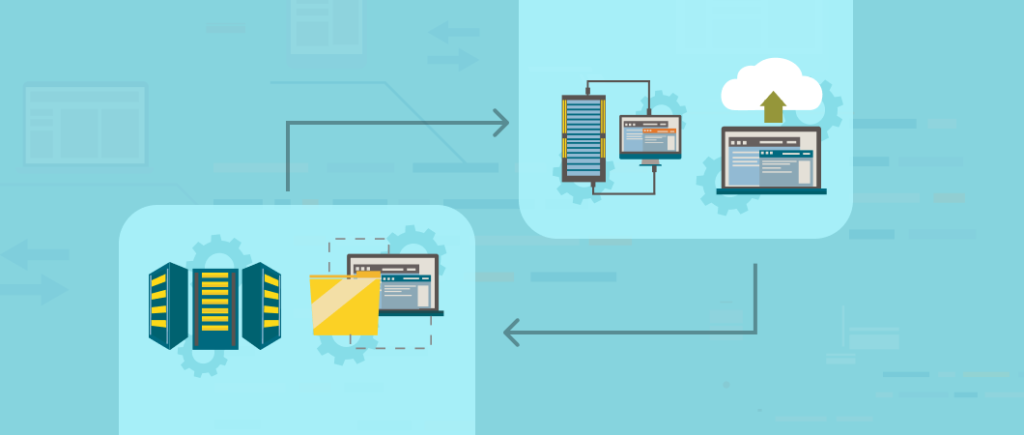Last updated on November 11th, 2022
DevOps adoption is at an all-time high. The market, expected to be worth $12.85 billion by 2025, is witnessing immense growth and development – thanks to its ability to drive quicker, higher-quality, and more cost-effective software development. But given how multifaceted tech ecosystems have become, managing the growing complexities of DevOps architectures is becoming increasingly difficult – especially as organizations mature. This shifts the spotlight on to Serverless.
What Serverless enables
Serverless, like Kubernetes and Microservices, is a growing “must-adopt” in the world of software development. Allowing a way for teams to build and run software applications – without having to waste efforts to manage the complexities of the underlying infrastructure – Serverless eliminates their provisioning, maintaining, and scaling responsibilities, and paves the way for improved productivity and higher business value.
With Serverless architectures, development teams can:
- Break products down into smaller fragments, thus achieving greater transparency and control
- Focus on developing core product features and not worry about server provisioning or maintenance
- Allow different components of product development to be developed independent of each other, thus reducing the domino impact of failure in one component
- Rapidly deploy (and pivot) products leveraging an agile architecture and respond quickly to emerging business needs
- Reduce operational costs while focusing on developing products that offer unmatched digital experiences
- Implement ensure build, test, and deployment pipelines using CI/CD that is tailored to application requirements
Why DevOps needs Serverless
Serverless architectures encourage the use of DevOps through the decomposition of software systems into smaller and more manageable components, leading to simplified decision-making. By offering an IT infrastructure that can be easily modified, these fully-managed architectures overcome the challenge of tightly coupled components, making deployments and rollbacks simple and straightforward.
They have the way to a NoOps future.
Leveraging Infrastructure-as-Code tools, they help in the quick and easy provision of cloud platforms and other necessary infrastructure, data centers through the declarative description of used services and their interconnections.
That being said, here’s how DevOps and Serverless go hand in hand:
- Collaboration:
Just like DevOps promotes collaboration between development and operations teams, allowing for more comprehensive development, Serverless deployments too embody this central theme: they allow teams to write code and make changes to one component in the context of other components. Since with Serverless deployment, it is impossible to make any change without focusing on the resources that change needs or how it will be executed, teams can be more sure of the success of the changes they make.
- Quality:
Although DevOps improves quality through automation and the removal of error-prone manual labor, the probability of one minor issue or bug impacting the entire product remains high. Serverless architectures help bring down the rate of failure through the independent development of different aspects of the product. Since each component is developed in isolation, failure in one component is unlikely to cause a ripple effect on another – thus allowing teams to make the most of immutable infrastructure to improve the overall quality of the product under development.
- Speed:
Although DevOps paves the way for quicker development through regular integration of feedback, implementing these changes often takes time. Serverless architectures, on the other hand, improve the lead time from commit to deploy. By allowing the frequent release of smaller, iterative components and subsequent integration of feedback, they allow teams to make changes in the code base more quickly, thus releasing small or incremental updates of the software and delivering new features to market faster.
- Unification:
To support DevOps’ unification of roles of different team members into one, Serverless eliminates the silos that exist between different stages of the development lifecycle. Since different people can simultaneously work on different aspects of development, they can accelerate the delivery and deployment of new features and changes while keeping up with the pace of change.
- Scalability:
Although DevOps paves the way for improved scalability by allowing developers to focus on building new features and operations to ensure everything stays in sync, there is always a concern regarding the scalability of existing infrastructure. Serverless architectures ensure teams scale seamlessly – without worrying whether their underlying architecture will support these changes. With Serverless, teams can focus on building application code and ensure their architecture keeps up and scales with application changes – thus eliminating quality issues, outages, and even data loss.
- Costs:
Although DevOps offers a cost-effective way of developing software, there is always the fear of costs spiraling as more resources get provisioned. Serverless architectures simplify DevOps operations by providing a scalable execution architecture and a predictable pricing model. Since teams only need to pay for the computing resource they use – and not shell out a penny for idle or unused resources – they can greatly bring down operational costs while also reducing lead time (and costs) for changes.
When it comes to software development, quality, speed, and costs are the top three factors that define the value of the methodology teams choose to drive revenue and value. This is especially true in this pandemic era, where organizations want to be resilient as well as agile. Although DevOps has long been enabling organizations to deliver cost-efficient, high-quality software at speed, when combined with Serverless architectures, they can deploy new products (and changes) in hours. Since there is no infrastructure responsibility weighing them down, product teams can pave the way for faster deployments, enable ease of scalability, and enjoy the flexibility of releases – all while accelerating innovation.



